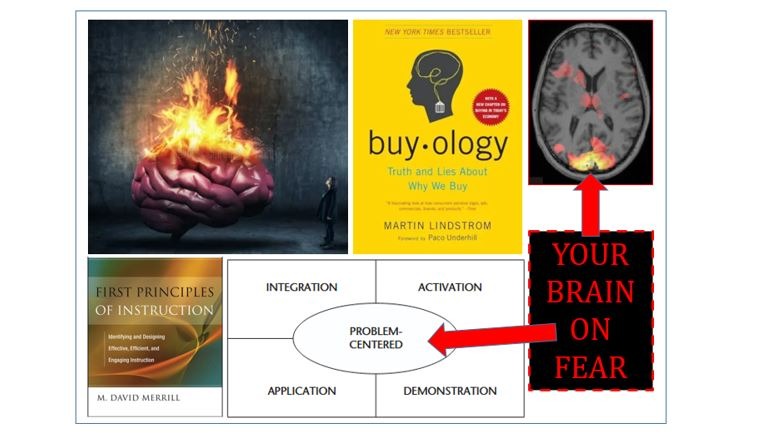CREATIVE LEARNING EXPERIENCES THAT CHANGE BEHAVIOR
I think the Technical Term is Dumpster Fire
What marketers & instructional designers have in common.
Lesley S
5/26/20253 min read


"When I walk into a hotel room in a strange city, I immediately toss my room key or card somewhere, and a millisecond later I’ve forgotten where I put it. The data just vanishes from my brain’s hard drive. Why? Because, whether I’m aware of it or not, my brain is simultaneously processing all other kinds of information—what city and time zone I’m in, how long until my next appointment, when I last ate something—and with the limited capacity of our short-term memories, the location of my room key just doesn’t make the cut."
– branding wizard Martin Lindstrom, author of BUYOLOGY: Truth and Lies About Why We Buy
I can relate to Lindstrom’s brain. As can any learner who’s sat thru workshops, trainings, classes or learning experiences. So we need a better term for it than cognitive overload. It sounds so clinical, cold, and calculating. Unlike the chaos that’s really afoot. Which is more like a dumpster fire. Just with a deluge of digital detritus.
What does cut through the noise? To find out, Lindstrom uses Functional magnetic resonance imaging (fMRI). fMRI measures how blood flow changes as brain activity changes. When neurons are activated, blood flows to that area - and fMRI picks it up. And what Lindstrom is looking for is the same thing as learning designers: the mental levers that change behavior.
Unfortunately, most of what marketers (and instructional designers) offer up gets relegated to the mental slushpile.
The reason is that our brains are constantly busy collecting and filtering information. The process is unconscious and instantaneous, but it is ongoing every second of every minute of every day. Some bits of information will make it into long-term storage—in other words, memory—but most will become extraneous clutter, dispensed into oblivion.
And Lindstrom has discovered that the stuff which escapes oblivion and lodges in long-term memory gets shuttled there by emotions, notably fear. But not vague anxiety. Fear about where we feel insecure. Vulnerable. Not enough. When fear-based advertising plays less on our generalized anxieties and more on our insecurities about ourselves, it can be one of the most persuasive—and memorable—types of advertising out there.
To steal this for educational purposes (um, great artists steal, right?), make the pain point in-your-face obvious. Then position the learning experience as the magical solution. The more painful and relatable the Before, the more people are gonna be motivated to go after the After - aka: use fear to get the learner's attention, boost their motivation to learn, and enhance retention & transfer.
What not to do: In this Learning Experience, you will learn bulletpointblahblah, bulletpointblahblah, bulletpointblahblah.
Please.
This scared no one.
Ever.
Instead, frighten 'em with a quick picture, anecdote or story of someone who is afraid of [insert relevant thing people are insecure about]. Now that you've got their attention, they will be motivated to find out how your learning experience will relive said pain. Learning expert David Merrill lays out how to do this in First Principles of Instruction (AECT, 2020) using problem-based design. Zero in on a real-world problem (pain point) and then use his various proven techniques to serve up the solution.
To his credit, Merrill does acknowledge that even if the mechanisms by which we learn haven't changed, the environment certainly has. "There is no argument that the sheer volume of available information is significantly greater than for any previous generation," notes Merrill. "There is no question that there are many more forms of instruction than the traditional schooling of only a couple of generations ago. However, in spite of these dramatic changes in the learning environment, it is unlikely that young people have significantly different learning mechanisms than their parents have...The underlying learning mechanisms of individual learners have not changed."